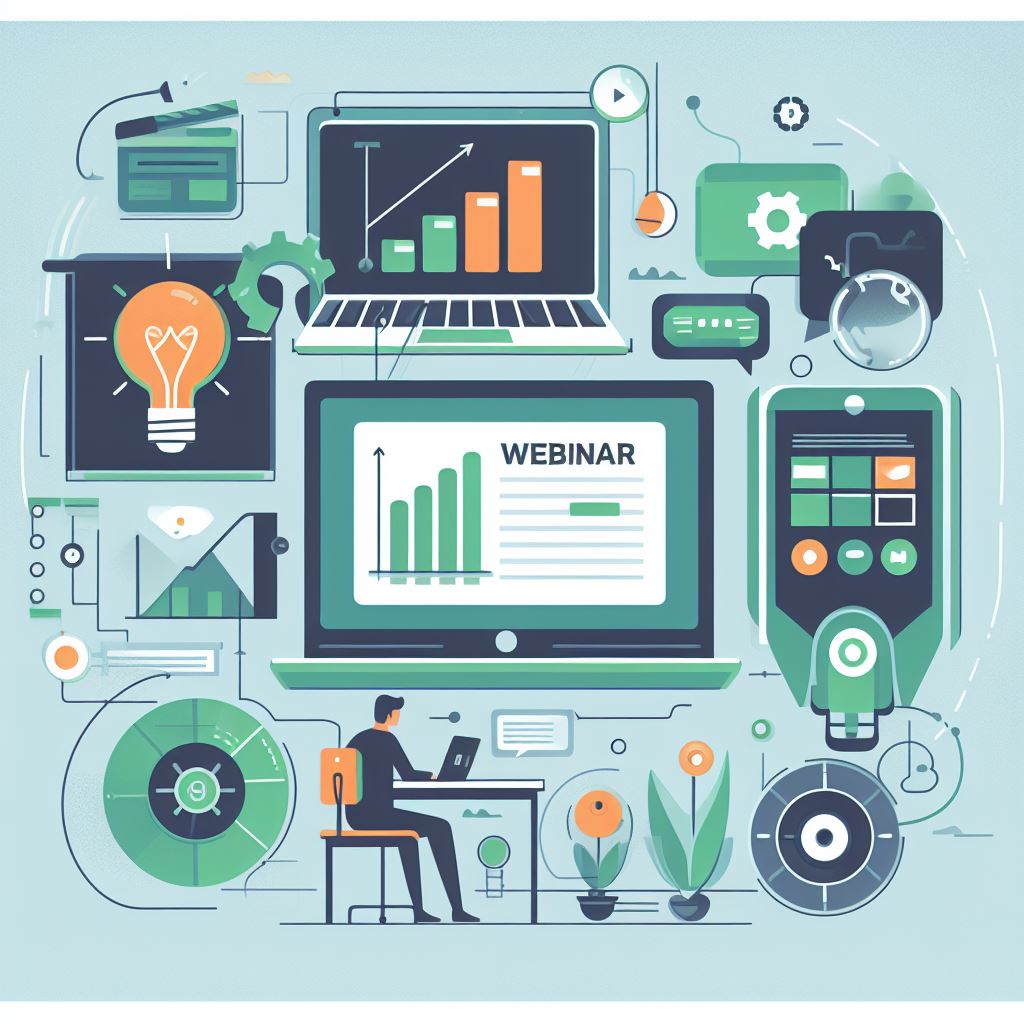Webinars: A B2B Marketing Powerhouse
Webinars are one of the most powerful tools for b2b marketers to generate qualified leads, educate prospects, and build trust with customers. Webinars allow you to showcase your expertise, demonstrate your value proposition, and engage your audience in real-time. Webinars can also help you to increase brand awareness, drive traffic to your website, and boost your conversions.
But how effective are webinars compared to other b2b lead generation tactics? How do webinars stack up against email marketing, content marketing, social media, and SEO? To answer these questions, we need to look at some data and statistics.
How Effective are Webinars as a B2B Lead Generation Tactic?
According to a report by DemandGen , webinars are the most effective tactic for generating qualified leads among b2b marketers. The report surveyed 160 b2b marketers and found that 68% of them rated webinars as one of the most effective tactics, followed by email marketing (58%), content marketing (55%), social media (44%), and SEO (38%).
Another source that supports the effectiveness of webinars is a blog post by HubSpot , which analyzed the data from 70,000 customers and found that webinars have the highest conversion rate among all lead sources. The blog post reported that webinars have an average conversion rate of 19%, compared to email marketing (13%), content marketing (12%), social media (10%), and SEO (14%).
These data suggest that webinars are more effective than other b2b lead generation tactics in terms of generating qualified leads and converting them into customers. However, there is another factor that we need to consider: the cost.
How Cost-Effective are Webinars as a B2B Lead Generation Tactic?
Webinars are not cheap to produce and host. You need to invest in software, equipment, speakers, promotion, and follow-up. According to a blog post by Unbounce , the average cost per lead (CPL) of webinars is $100, which is higher than email marketing ($53), content marketing ($92), social media ($55), and SEO ($119).
However, cost per lead is not the only metric that matters. We also need to look at the return on investment (ROI) of each lead source. To do that, we can use a simple formula to calculate the ranking score of each lead source as follows:
Ranking Score = (CR / CPL) * 100
The higher the ranking score, the more cost-effective the lead source is. Here is a table that shows the ranking score of each lead source based on the data from the sources mentioned above:
| Lead Source |
Average Cost per Lead (CPL |
Conversion Rate (CR) |
Ranking Score |
| Webinars |
$100 |
19% |
19 |
| Email Marketing |
$53 |
13% |
24.53 |
| Content Marketing |
$92 |
12% |
13.04 |
| Social Media |
$55 |
10% |
18.18 |
| SEO |
$119 |
14% |
11.76 |
Based on this table, we can see that email marketing has the highest ranking score, followed by webinars, social media, content marketing, and SEO. This means that email marketing is the most cost-effective lead source in terms of cost and conversion, while SEO is the least cost-effective one.
However, this ranking may vary depending on other factors such as the quality of leads, the industry, and the target audience. For example, webinars may generate more high-quality leads than email marketing, which may result in higher customer lifetime value (CLV) and lower customer acquisition cost (CAC). Webinars may also be more suitable for complex or technical products or services that require more education and demonstration than other lead sources.
To visualize the data from the table above, we can also use a chart that shows the average cost per lead and conversion rate of each lead source:
![A chart comparing the effectiveness of webinars to other b2b lead sources]
The chart shows that webinars have a high conversion rate but also a high cost per lead, while email marketing has a low cost per lead but also a low conversion rate. Content marketing and social media have similar cost per lead and conversion rate, while SEO has a low conversion rate and a high cost per lead.
Conclusion
Webinars are a powerful b2b marketing tool that can help you generate qualified leads, educate prospects, and build trust with customers. Webinars are more effective than other b2b lead generation tactics in terms of generating leads and converting them into customers, but they are also more expensive to produce and host. Therefore, you need to consider your budget, your goals, and your audience when choosing the best lead source for your b2b marketing strategy.
Sources:
: DemandGen Report: 2019 Content Preferences Survey Report
: HubSpot: The Ultimate List of Marketing Statistics for 2020
: Unbounce: How Much Do Webinars Cost? (And How to Budget for Them)

